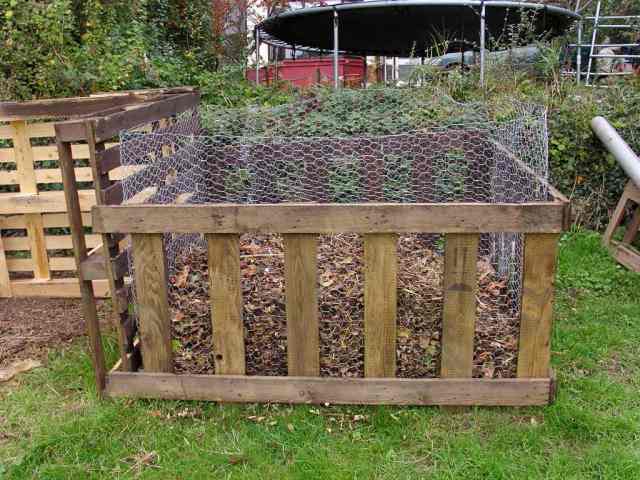From time to time I’ve written articles for Leicestershire Master Composters Composting Chronicle – a limited readership as I’m sure you can imagine. So I thought I’d ‘upcycle’ the work I’ve done and publish them here too.
So, Autumn, a season of mists and mellow fruitfulness. Time to gather in the apple crop, tidy the garden, and make leaf mould. Well, compost geeks like me make leaf mould.
Leaf mould is wonderful stuff – high in organic matter yet low in nutrients, ideal for those crops that need this kind of soil conditioner. But we’ll come to how best to use it later. First, how to make it – it couldn’t be simpler.
There’s nothing wrong with adding fallen autumn leaves to your regular compost heap. They rot fairly slowly on there, but will add browns (carbon) and are a useful addition. However, if you have the space, or a lot of leaves to deal with, leaf mould is a much better use of them. Unlike a regular compost heap, leaves on their own are mainly decomposed by the action of fungi, and it’s a little slower and colder than a compost heap. Ideally, construct a dedicated bin from chicken wire and some posts – something like this:

Then simply gather your leaves and chuck them in. Leave it for a year or two, and you have finished leaf mould. To speed up the process, you can chop the leaves up first, using a leaf blower or by running over them with your lawnmower. You’ll need a new bin each year – don’t add this year’s leaves to last year’s or you’ll never get to harvest the finished leaf mould.
If you don’t have space for something on this scale (although that’s a pretty big bin in the picture – you can make something much smaller) then simply gather the leaves into black bin bags, puncture some holes in them and store them in a quiet corner – behind the shed, for example. If the leaves are dry when they go into the bags, great. If not, adding some moisture will help – if you can bring yourself to wee on them, that’s ideal! You can use the leaves of all deciduous trees, even walnuts (walnut trees exude a substance from their root which stops other plants from growing, which is why some people are reluctant to compost their leaves. But the offending substance breaks down in the leaf mould making process and won’t cause any problems when you use the product). Avoid leaves of evergreen species such as holly and conifers, but there’s no need to be too fussy – a holly leaf or three won’t hurt.
At the end of the process you should have something that’s pretty unrecognisable as leaves. It may have the odd unrotted leaf in it, but these can be picked out, leaving a crumbly rich brown soil-like material. One use of this is as seed compost. It’s low in nutrients, but seeds don’t need any nutrients to get started because they have it all within them. Simply fill up your seed trays with leaf mould and sow as usual.
It’s also a great soil conditioner for crops that don’t need lots of nourishment, like runner beans. Lots of people think runner beans are hungry, but this is wrong – they love lots of moisture at their roots, which is why they enjoy the traditional bean trench compost, but they fix their own nitrogen directly from the air, so the the nitrogen in the trench contents goes to waste.

Far more sensible to just use leafmould or even newspaper to fill that bean trench, and add all those compost ingredients to your regular heap. Other places to use it include the plot where you plan to grow carrots or onions in the coming season. Or around perennial planting, such as shrubs and herbaceous plants, as a mulch. It will keep the weeds down, conserve moisture in the soil, and improve the soil as the worms and other invertebrates integrate it into the soil for you. Unlike regular compost, the time of year you use it doesn’t matter too much as there’s not many nutrients to leach away. Late winter is fine, if this is when you have time. But you can leave it where it is until it’s time to mulch your ornamentals or prepare that bean trench in spring.
So, this autumn, as well as gathering your apples, tidying your vege plot and enjoying the last of the sunshine, give making leaf mould a go. This time next year you’ll be reaping the rewards, and sweeping leaves is great exercise for your abs!


Fine article. Thank you.
Cheers,
Frank
You’re welcome….Carrie